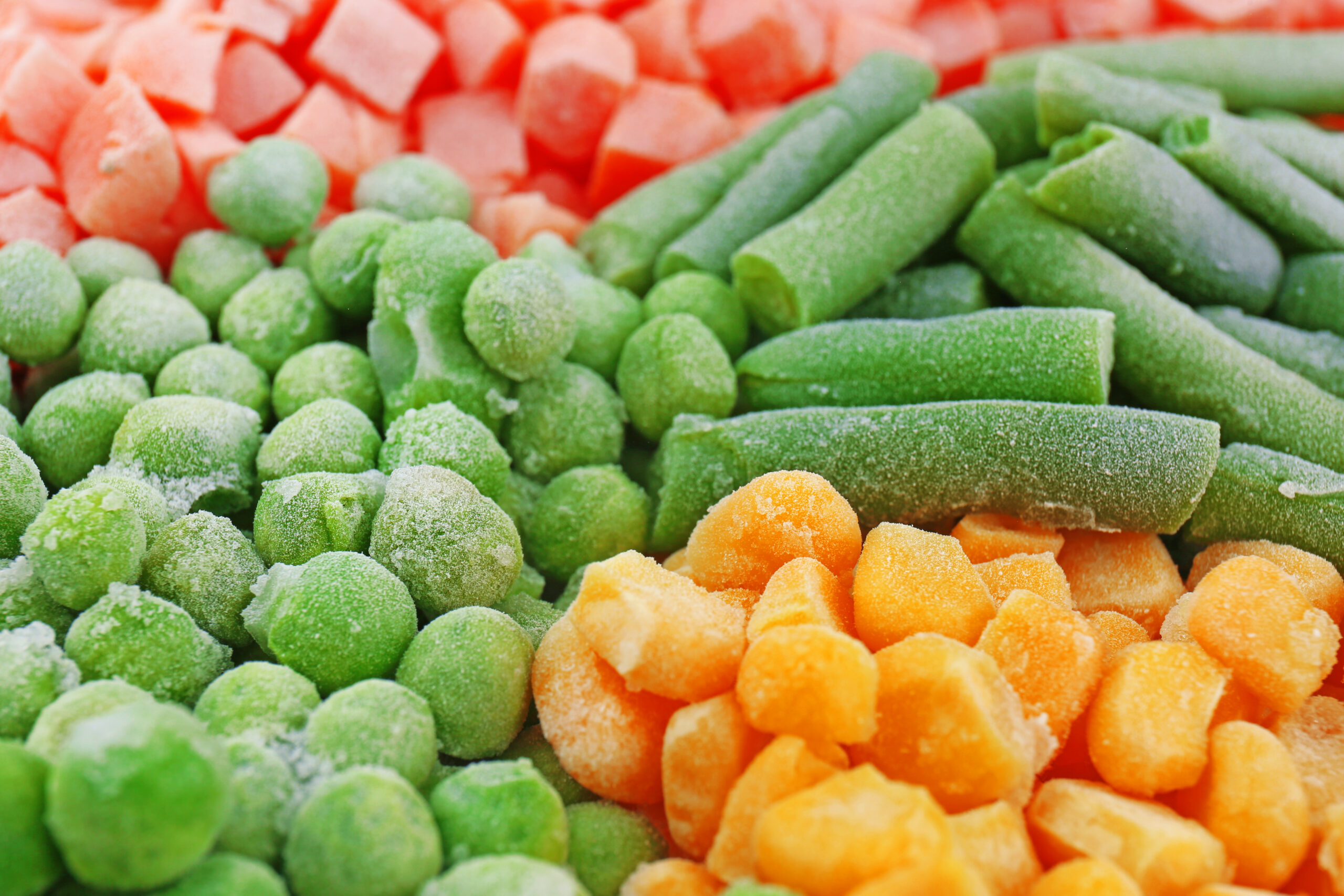The methods of quick freezing of fruits and vegetables are:
(1) The blast freezing method generally uses a tunnel-type blast freezer. The product is carried through the tunnel with a mesh belt and typically goes against the cold wind. The cold air temperature usually used in this freezing method is -18–34°C, Between 30-1066 meters per minute.
In addition, a vulcanization freezing method can be used for small granular products such as green peas, sweet corn, and various vegetables cut into small pieces. The refined products are on a perforated mesh belt or a perforated plate. , the laying thickness is 2.5-12.5 cm.
When freezing, the cold air is strongly blown upward from the bottom of the mesh belt at a sufficient speed, and the product is blown up but not taken away. This method increases the contact area between the cold air and the material, causing Fast freezing.
(2) Indirect contact freezing method This method is to freeze and cool the product by contacting the surface of the metal plate cooled by the refrigerant. The primary device is to install a movable hollow metal plate in the heat-insulated compartment, and the refrigerant flows inside the hollow of the vessel. , the product is placed in close contact between the upper and lower hollow plates for heat exchange.
There are mainly three types: intermittent contact freezer, semi-automatic contact freezer, and fully automatic contact freezer. The general freezing temperature is -45°C.
(3) Immersion freezing method The product is directly immersed in liquid refrigerant. The liquid is a good conductor of heat. In immersion freezing, the contact area with the product is the largest, and the freezing speed is the fastest.
(4) Low-temperature freezing method This method is a method in which the product is rapidly frozen under the condition of a refrigerant with a shallow boiling point undergoing a phase change (from liquid to gas). This is because the refrigerant needs to absorb a large amount of heat during the boiling phase transition process, and the product absorbs the heat to cool it down.
The usual refrigerant is liquid nitrogen with a boiling point of -195.81°C, followed by carbon dioxide with a boiling point of -78.5 ℃. This method is faster and more effective than the previous refrigeration methods.



